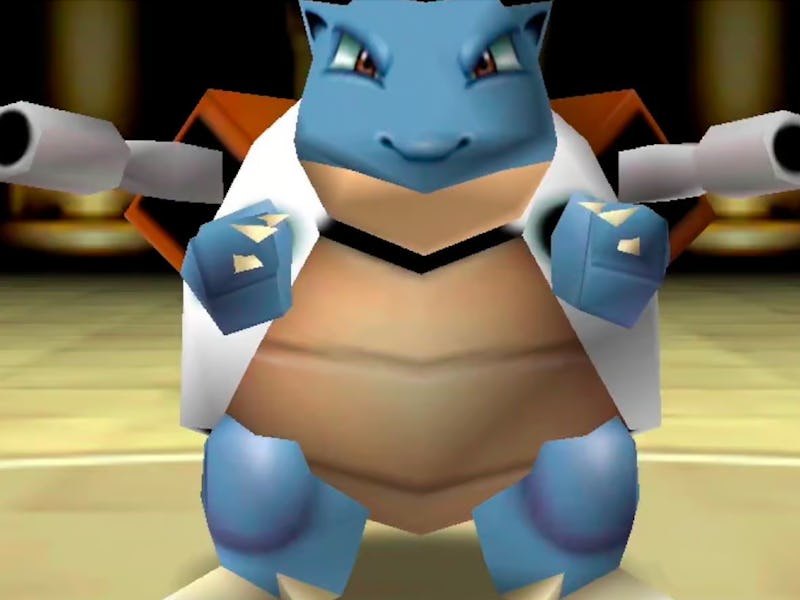Pokémon Stadium Was Ahead of Its Time
But 25 years later, Nintendo’s most ambitious Pokémon game can feel like a husk of its former self.

Nintendo Switch Online has allowed players to bask in the nostalgia of some of the N64’s most recognizable titles, including Super Mario 64, GoldenEye 007, and The Legend of Zelda: Ocarina of Time. However, perhaps the most curious to revisit in the modern era a revolutionary Pokémon game that currently stands out, for better or for worse, as one of the toughest tests for would-be Pokémon masters in the entire franchise.
Pokémon Stadium was released 25 years ago in Japan on April 30 ,1999, and when it debuted in North America a year later, it was lauded as the revolutionary beginnings of a franchise. “For the first time ever, battle in 3D!” its commercial announced. (In reality, this was actually the second Pokémon Stadium game following a bare-bones title released in 1998 exclusively in Japan, but a quarter of a century later, time has mostly forgotten the series' messy beginnings.)
Getting your Pokémon onto the N64 was sometimes easier said than done.
The goal of Pokémon Stadium was universal: to provide a battle-centric test to players that had, at this point, already gotten used to the mechanics of Pokémon competitions through the Game Boy games. For many, it was a much-needed follow-up. Games like Pokémon Red, Blue and Yellow (Or Red, Green, Blue and Yellow in Japan) could be quite difficult to newcomers, but by the time you took down the Elite 4, bested your rival, and entered the Hall of Fame, there were few challenges left aside from simply restarting the game. Or you could take on your friends by connecting over Link Cable, pitting your overpowered critters against one another. Even then, players hungered for something more.
Through a variety of specific challenges (in the form of “Cups”), various single player quests, and multiplayer capabilities, Pokémon Stadium became a Thunderdome for Pokémon veterans. At the time, the 3D was impressive, and it honestly still is to this day. Even at their most cartoonish, the monster sprites and their corresponding animations are charming, energetic and frequently hilarious. Add the announcer absolutely annihilating his vocal cords (in North America, the performer behind the play-by-play was Ted Lewis, most well-known as the original voice of Team Rocket’s James and Ash’s one-time companion Tracy Sketchit), and you had a staple of turn-of-the-millennium living rooms everywhere.
“There is no spoon.”
Best of all? It could be tough, but not for reasons that some fans were aware of. Pokémon Stadium was filled with “rental” Pokémon, ones that could be selected and used for things like the Gym Leader Castle, where you took on the line-up of Kanto region gym leaders, their crony trainers, and the Elite 4. However, unlike the Pokémon that you could raise in the Game Boy titles and customize with specific moves, rental Pokémon were locked in, forcing players to work within the restrictions the game provided. If you owned a Nintendo 64 Transfer Pak, you could port over your ideal team from the Game Boy games. Otherwise, good luck.
When Pokémon Stadium was announced for Nintendo Switch Online, it came with no way to play with any Pokémon outside of the rental ones. This isn’t surprising, as no one would realistically predict that you’d be able to port your late ‘90s Game Boy team over to an online Nintendo service in the 2020s. But without any method of using non-Rental ‘mons, and with no Switch access to the games like Red and Blue that Stadium was originally tied to, the game can feel like a husk of itself — good for a nostalgic look at the wriggling, expressive sprites and little else.
Pokémon Stadium’s 3D design was revolutionary at the time. Now, it’s the franchise standard.
As the Pokémon franchise has pivoted to a full 3D aesthetic, the look of Pokémon Stadium isn’t a niche outlier anymore. But even if it’s difficult to appreciate it in 2024 to the extent that fans could in 1999, it doesn’t diminish the game’s legacy. For a generation of Pokémon fans, Stadium was the ultimate way to test the skills you’d developed during your solo adventure, with the 3D monsters serving as the eye candy prize for your hard-earned mettle. At the end of the Game Boy journey, you were deposited back in your childhood bedroom in Pallet Town. The only option was to scour the wild for more Pokémon or redo obstacles that you’d already overcome.
Pokémon Stadium, on the other hand, was proof that there were still things left to conquer. Life as a Pokémon Master hadn’t ended as soon as you beat Red and Blue. With Stadium in your Nintendo 64, it had only just begun.